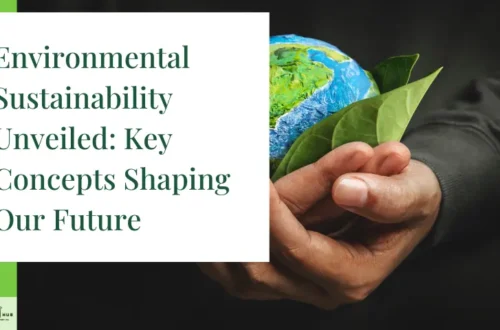Eco Friendly Landscaping Guide: Sustainable Outdoor Spaces

Looking to transform your outdoor space while being environmentally conscious? Eco friendly landscaping is the answer! By incorporating sustainable practices and materials, you can create a beautiful landscape that benefits both your property and the planet. From native plantings that require less water to organic fertilizers that promote soil health, eco-friendly landscaping offers a range of benefits. Are you ready to enhance your outdoor oasis while reducing your carbon footprint? Dive into our guide for practical tips and inspiration on how to create a stunning landscape that’s kind to the environment.
Understanding the Green Approach
Principles
Eco-friendly landscaping revolves around sustainable practices that minimize environmental impact. It focuses on conserving resources, reducing waste, and promoting biodiversity. By using native plants, organic materials, and efficient irrigation systems, landscapers can create beautiful outdoor spaces while preserving the ecosystem.
Benefits
Implementing eco-friendly landscaping has numerous benefits for the environment. It reduces water usage, minimizes chemical pollution, and supports local wildlife populations. it helps combat climate change by sequestering carbon dioxide and improving air quality.
Implementation
To implement eco-friendly practices in your outdoor space, consider the following:
- Plant Native Species: Native plants are adapted to the local climate and require less water and maintenance.
- Water Conservation: Install drip irrigation systems or rain barrels to reduce water consumption.
- Compost: Use compost to enrich soil fertility naturally and reduce the need for synthetic fertilizers.
- Avoid Chemicals: Opt for organic pest control methods to protect beneficial insects and pollinators.
Choosing Native Plants Over Invasive Species
Benefits of Selecting Native Plants
Selecting native plants for landscaping offers numerous benefits. These plants have adapted to the local environment, requiring less water and maintenance. By choosing native plants, you can create a sustainable ecosystem that supports local wildlife.
Native plants also promote biodiversity by providing food and shelter for native insects, birds, and other animals. They help conserve water resources by reducing the need for irrigation, ultimately contributing to a healthier environment.
Negative Impacts of Invasive Species
Invasive species pose significant threats to ecosystems. These plants often outcompete native species, leading to a decline in biodiversity. They can alter soil composition, disrupt natural communities, and even degrade habitats essential for wildlife survival.
Moreover, invasive species can spread rapidly, making them difficult to control once established. Their aggressive growth patterns can choke out native vegetation, disrupting the delicate balance of local ecosystems and causing long-term damage to land.
Incorporating Native Plants Effectively
When selecting native plants for your garden, consider factors such as soil type, sunlight exposure, and moisture levels. Choose a variety of plants to support different wildlife species and create a more resilient ecosystem.
Before planting, research the native plant selections that thrive in your region. Consult with local nurseries or botanical gardens for recommendations on suitable native landscaping plants. By incorporating a mix of flowers, shrubs, and trees, you can enhance the beauty and functionality of your landscape while supporting local biodiversity.
Pros of Choosing Native Plants:
- Low maintenance requirements
- Support local wildlife.
- Conserve water resources.
- Promote biodiversity.
Cons of Invasive Species:
- Disrupt natural ecosystems.
- Reduce biodiversity.
- Difficult to control once established.
- Degrade habitats.
Promoting Soil Health in Your Garden
Improve Soil Structure
To enhance soil health, incorporate organic matter like compost to improve soil structure. This helps retain moisture and provides essential nutrients for plant growth.
Enhance Soil Fertility
Boost soil fertility by adding natural fertilizers such as compost or aged manure. These enrich the soil with nutrients necessary for healthy plant development.
Mulching Techniques
Utilize mulching techniques to maintain soil moisture and suppress weed growth. Mulch also helps regulate soil temperature and prevent erosion.
Proper Yard Waste Management
Dispose of yard waste properly by composting it to create nutrient-rich soil amendments. This reduces landfill waste and benefits your garden’s soil health.
Plant Rain Gardens
Create rain gardens to manage stormwater runoff effectively. These gardens help recharge groundwater and reduce pollution, benefiting both soil health and the environment.
Natural Solutions for Fertilization and Composting
Benefits of Composting
Composting is a natural process that breaks down organic materials like yard waste and pet waste into nutrient-rich soil. This sustainable practice reduces landfill waste and enriches the soil with essential nutrients.
By composting, you can create a healthy ecosystem in your garden by providing plants with the necessary nutrients they need to thrive. This process also helps retain moisture in the soil, reducing the need for excessive watering.
Eco-Friendly Fertilization Methods
Implementing natural fertilization methods such as using mulch and compost can significantly benefit your plants. Mulching helps regulate soil temperature, reduce weed growth, and retain moisture, while compost adds valuable nutrients to the soil.
When choosing fertilizers, opt for organic options like those made from nectar, which are free from harmful chemicals like coal tar. These alternatives promote plant growth without compromising the environment’s health.
Sustainable Gardening Practices
Incorporating eco-friendly landscaping practices not only benefits your garden but also contributes to a healthier environment. By avoiding chemical fertilizers and opting for natural solutions like composting, you reduce water pollution and support biodiversity.
To further enhance sustainability, consider planting native species that require less maintenance and water. Native plants are adapted to the local climate, making them more resilient and less dependent on external inputs.
Water Use and Conservation Techniques
Rainwater Harvesting
Rainwater harvesting is a sustainable practice that involves collecting rain water from roofs and directing it to storage tanks. This collected water can then be used for watering plants, reducing reliance on municipal water sources. By utilizing rain barrels, homeowners can prevent water runoff and erosion while conserving water resources.
Implementing rainwater harvesting systems helps in reducing the strain on storm drains and prevents street flooding by diverting excess water away from paved surfaces. This technique minimizes the impact of water runoff on nearby waterways and rivers, ultimately contributing to the preservation of these natural ecosystems.
Eco-Friendly Irrigation Methods
Using eco-friendly irrigation methods is crucial for maintaining a sustainable landscape. Opt for drip irrigation or soaker hoses instead of traditional sprinklers to deliver moisture directly to plant roots, minimizing water waste through evaporation. These techniques not only conserve water but also help in preventing wet spots in the yard.
By incorporating smart irrigation controllers, homeowners can efficiently manage watering schedules based on weather conditions and plant requirements. This approach ensures that irrigation is only provided when necessary, reducing unnecessary water usage and promoting healthier plant growth.
Preventing Erosion and Floods
To prevent soil erosion and minimize the risk of floods, consider implementing landscaping features such as rain gardens, permeable pavers, and bioswales. These elements help in absorbing excess water, preventing it from flowing into storm drains and causing floods.
Creating swales along the contour of your landscape can effectively capture runoff, allowing it to slowly infiltrate the soil and recharge groundwater. This not only reduces the impact of heavy rains but also promotes soil health by preventing erosion and nutrient loss.
Benefits of Water Conservation
- Reduces reliance on municipal water sources.
- Minimizes water waste through efficient practices.
- Preserves natural ecosystems by reducing water runoff.
- Prevents soil erosion and promotes healthy plant growth.
Minimizing Chemicals in Your Outdoor Space
Natural Pest Control
When it comes to natural lawn maintenance, consider using beneficial insects like ladybugs and lacewings to control pests. These insects can help keep your garden healthy without the need for harmful chemicals.
Herbicide Alternatives
Explore pesticides alternatives such as vinegar or boiling water to kill weeds instead of using chemical herbicides. These natural methods are effective and safer for the environment.
Sustainable Landscaping Practices
Incorporate shade elements like trees and shrubs into your landscaping design to reduce the need for chemical inputs. Shade can help cool the environment and minimize weed growth.
Eco-Friendly Weed Management
Opt for manual sidewalk weeding or mulching to suppress weed growth instead of relying on chemical weed killers. Mulch not only helps control weeds but also retains moisture in the soil.
Asphalt-Free Solutions
Avoid using asphalt or concrete in your outdoor space to allow rainwater to penetrate the soil naturally. This reduces runoff and minimizes the need for chemical treatments to maintain pavement areas.
Sunlight Optimization
Design your landscape to maximize sunlight exposure in sunny areas where you plan to grow plants. Adequate sunlight promotes plant health, reducing the reliance on chemical fertilizers.
Time-Saving Techniques
Consider grouping plants based on their watering needs to streamline irrigation practices and save time. Efficient watering reduces the risk of over-watering, which can lead to pest infestations requiring chemical interventions.
Pollution Prevention
To prevent contamination from reaching water sources, ensure that nothing is being washed into storm drains. Keep your garage clean and dispose of hazardous materials properly to protect the environment.
Safe Storage Practices
Store garden chemicals securely in a well-ventilated area away from living spaces, especially in the back corner of your yard. Proper storage prevents accidental exposure and environmental contamination.
Reduce PAHs Exposure
Avoid using coal tar-based sealants on driveways and parking lots to minimize exposure to PAHs, which are harmful chemicals that can leach into the soil and water sources.
Integrating Recycling and Upcycling in Design
Recycled Materials
Recycling plays a crucial role in eco friendly landscaping, allowing you to incorporate sustainable practices into your outdoor space. By utilizing recycled materials such as reclaimed wood, glass, or plastic, you can create unique and environmentally friendly elements in your design. These materials not only add character to your landscape but also reduce the demand for new resources.
Upcycled Outdoor Decor
Consider upcycling items like old tires, pallets, or containers to enhance the aesthetic appeal of your outdoor area. Transforming these items into planters, furniture, or decorative pieces adds a personal touch to your landscaping while reducing waste. Embracing upcycling not only fosters creativity but also contributes to minimizing the environmental impact of discarded items.
Environmental Benefits
Embracing recycling and upcycling in your landscaping design offers numerous environmental benefits. By diverting yard waste and other materials from landfills, you help reduce greenhouse gas emissions and promote a more sustainable ecosystem. Incorporating recycled products into your design reduces the need for new manufacturing processes, conserving energy and preserving natural resources.
Seeking Expertise for Sustainable Landscaping
Consulting Professionals
When considering sustainable landscaping, it’s beneficial to consult with landscaping professionals. These experts can provide valuable insights into creating environmentally friendly outdoor spaces. They offer sustainable design ideas that incorporate eco-friendly practices.
Seeking advice from professionals ensures that your sustainable landscapes are not only visually appealing but also environmentally conscious. Experts can recommend green landscaping plants and materials that are suitable for your specific location and climate.
Tailored Eco-Friendly Spaces
Experts in sustainable landscape maintenance practices can help you tailor your outdoor space to meet your unique needs. They take into account factors such as your lifestyle, budget, and preferences to create a sustainable landscaping plan that suits you.
Professionals can suggest green landscaping alternatives and tolerant landscaping options that require minimal maintenance while promoting sustainability. Their expertise ensures that your eco-friendly landscape thrives for years to come.
Summary
Incorporating eco-friendly practices into your landscaping not only benefits the environment but also creates a healthier and more sustainable outdoor space for you to enjoy. By choosing native plants, promoting soil health, conserving water, and minimizing chemical usage, you can contribute to a greener world while enhancing the beauty of your surroundings. Integrating recycling and seeking expertise in sustainable landscaping further elevates your efforts, ensuring a holistic approach to eco-conscious outdoor living.
Take the first step towards eco friendly landscaping by implementing these practices in your outdoor space. Small changes can make a significant impact, not just for the environment but also for your well-being. Embrace sustainable landscaping and be a part of the movement towards a greener future.





